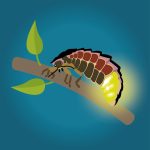 It’s not just insects, almost every species studied shows an impact when exposed to artificial light.
It’s not just insects, almost every species studied shows an impact when exposed to artificial light.
💡 Lighting is estimated to account for 15% of global electricity consumption and 5% of global greenhouse gas emissions.
💡 Social inequalities in exposure to light pollution occur across urban-rural settings.
💡 Light pollution is negatively impacting astronomy and our ability to observe the stars. 90% of the population of the UK are unable to see the Milky Way from where they live.
💡 Light pollution can reduce the number of meteors seen during the peak of the annual Perseid Meteor Shower from around 40 per hour to almost none.
💡 The Environment Agency’s State of the Urban Environment Report acknowledges that light pollution comes with urban life and identifies an uneven distribution of the natural environment across all sectors of society, leading to issues of environmental justice.
💡 Humans have evolved to rely on the cycle of night and day to govern our physiology.
💡 Evidence suggests that light exposure at the wrong time has profound impacts on human circadian rhythm, affecting physical and mental functions.
💡 Studies have found links between Artificial Light at Night (ALAN), low melatonin levels and disrupted circadian cycles with heart disease, diabetes, depression and cancer – particularly breast and prostate cancers.
💡 A cross-sectional study of 98,658 participants from 162 study sites found significant associations between exposure to higher intensity of ALAN with increased risk of diabetes.
Nurture the Night Shift

 It’s not just insects, almost every species studied shows an impact when exposed to artificial light.
It’s not just insects, almost every species studied shows an impact when exposed to artificial light.